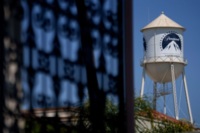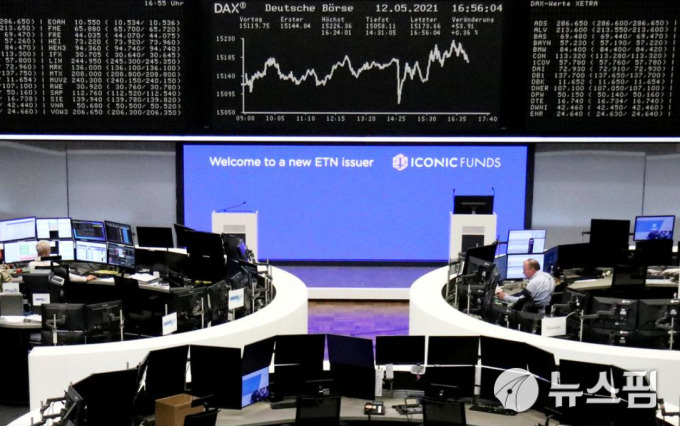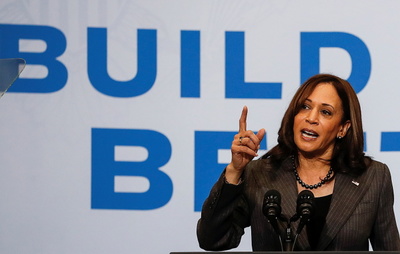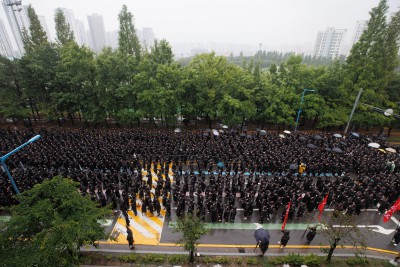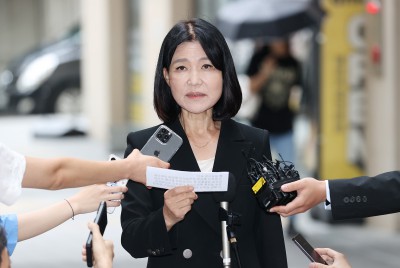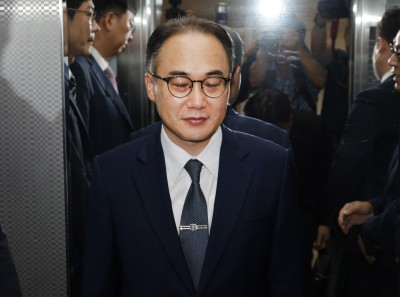Remarks by Chairman Ben S. Bernanke
At the Allied Social Science Association Annual Meeting, Chicago, Illinois
January 5, 2007
Central Banking and Bank Supervision in the United States
The Federal Reserve, like many central banks, is engaged in a wide range of activities beyond the making of monetary policy. For example, the Fed plays a critical role in the U.S. payments system, both as an overseer and as a provider of wholesale and retail payments services; it has substantial responsibilities in the area of consumer protection, including rule-writing and enforcement; it promotes financial stability; and, together with other agencies, it supervises both large and small banking organizations.
In this talk I will consider the case for one of these activities--namely, the supervision of the banking system--being conducted, at least in part, by the U.S. central bank. In some countries, such as the United Kingdom and Japan, the responsibility for supervising banks (as well as financial institutions and financial markets more generally) has been assigned to a single financial supervisory agency, rather than to the central bank. In the euro area, even as the European Central Bank has assumed responsibility for monetary policy, some national central banks or other national authorities have retained substantial supervisory powers. Various other institutional arrangements exist around the world, including the more traditional model in which the central bank also serves as a supervisor of the banking system. In light of these alternative models, does it make sense for the Federal Reserve to supervise banking organizations?
At a conceptual level, the discussion of whether the central bank should also act as a supervisor has focused on issues of incentives and efficiency. With respect to incentives, one question that has been raised is whether assigning both macroeconomic and supervisory goals to a single institution might not lead to conflicts of interest. Some writers have argued, for example, that a central bank with supervisory responsibilities might, at times, be hesitant to impose appropriate monetary restraint out of concern for possible adverse effects on banks (Goodhart and Schoenmaker, 1995). On the other hand, if macroeconomic and supervisory goals are interdependent, a single agency responsible for both objectives might be better able to take those interdependencies into account than could multiple agencies, each charged with a single goal (Wall and Eisenbeis, 1999; Bernanke, 2001). For example, Alan Greenspan has argued along these lines that "a single regulator with a narrow view of safety and soundness and with no responsibility for the macroeconomic implications of its decisions would inevitably have a long-term bias against risk-taking and innovation (Greenspan, 1994, p. 130)."
The issue of the efficiency of combining central banking and supervision in one agency boils down to whether that combination entails significant economies (or diseconomies) of scope (Goodhart, 2000; Mishkin, 2001; Haubrich and Thomson, 2005). For instance, if supervisory activities yield information that is useful for carrying out monetary policy or other central bank functions (or vice versa) and this information cannot be obtained easily through interagency cooperation, then granting some supervisory authority to the central bank may lead to better outcomes. By the same token, if economies of scope are outweighed by the benefits of specialization--arising, for example, from increased organizational focus, the development of more specialized expertise, or a reduction in regulatory overlap--then the cause of efficiency may be better served by separating supervision from central banking.1
Abstract arguments can take us only so far, however. Because financial markets, political systems, and regulatory objectives vary across countries and because initial conditions are influenced by historical accident, no single institutional structure seems likely to be best in all cases (Dixit, 1996). Therefore, I will avoid generalizations today and restrict my attention to the current arrangements in the United States.
In the U.S. context, the various issues that have been raised concerning institutional incentives seem unlikely to be determining factors in a consideration of the preferred regulatory structure; indeed, the side of the debate on which they would weigh is uncertain. In particular, U.S. monetary policy has been quite successful for some time, and I am not aware of any evidence that monetary-policy decisions have been distorted because of the Fed’s supervisory role. The issue of efficiency is less easy to dismiss, however. The U.S. bank regulatory system is complex and in some respects duplicative, and though removing supervisory authority from the Fed would leave much of this complexity intact, it would produce a slightly simpler allocation of supervisory responsibilities. We can thus narrow the question I posed at the beginning, of whether the Fed should supervise banks, to the question of whether the Fed’s supervisory role generates economies of scope of sufficient social benefit to outweigh any associated costs.
In the remainder of my remarks, I will discuss some economies of scope arising from the combination of bank supervision and other central bank responsibilities. Although I will touch on a number of complementarities between these activities, my focus will be the benefits of the Fed’s supervisory authority for the execution of one of its core functions: the prevention and management of financial crises. In particular, I will argue that the Fed’s ability to deal with diverse and hard-to-predict threats to financial stability depends critically on the information, expertise, and powers that it holds by virtue of being both a bank supervisor and a central bank.
The Federal Reserve’s supervisory authority
As a starting point, some background on the Federal Reserve’s supervisory authority may be helpful. The Federal Reserve shares the responsibility for regulating and supervising the U.S. financial system with a number of federal and state government agencies, including the other banking agencies, the Securities and Exchange Commission (SEC), and the Commodity Futures Trading Commission. The Fed, along with state authorities, supervises state member banks (that is, state-chartered banks that are members of the Federal Reserve System). In addition, it supervises the U.S. operations of foreign banks and, in some cases, the foreign operations of U.S. banks.
The Federal Reserve also serves as the umbrella supervisor of all bank holding companies and financial holding companies, which gives the U.S. central bank broad oversight responsibilities for these banking organizations. However, the bank and nonbank subsidiaries of such holding companies are often supervised by agencies other than the Fed. Supervisory responsibility is determined by the type of charter held by the supervised company and by the principle of functional regulation, under which the identity of the primary supervisor depends on the nature of the financial activity being carried out. For example, the commercial banking activities of holding-company subsidiaries with national bank charters are supervised by the Office of the Comptroller of the Currency (OCC), whereas securities activities in nonbank subsidiaries are under the jurisdiction of the SEC. The Fed cooperates with the OCC, the SEC, and other supervisors in determining the financial condition of the consolidated organization.
The Fed’s supervisory responsibilities require extensive engagement at both the policymaking and the operational levels. In the policy arena, the Fed provides technical support to the Congress on legislation related to banking and financial markets and sometimes advocates specific measures (such as prompt corrective action for troubled depositories); along with other agencies, it represents the United States in international forums to develop and negotiate various standards (such as bank capital standards); it collaborates with other agencies (or, in some cases, has sole authority) to develop regulations and supervisory guidance that implement the banking and consumer protection laws; and, working with other agencies as appropriate, it develops norms and practices for supervisors and examiners. At the operational level, the Federal Reserve System (including the twelve regional Federal Reserve Banks) works closely with other agencies to examine banking organizations and to ensure that they operate in a safe and sound manner and comply with the relevant laws and regulations.
The Federal Reserve’s supervisory activities give the institution access to a wealth of information about the banking system. For example, the Fed’s examination staff collects and analyzes information on each supervised organization’s management structure, lines of business, financial condition, internal controls, risk‑management practices, operational vulnerabilities, and much else. Moreover, the Fed’s supervisory activities provide it with a window onto financial institutions that it does not regulate and onto developments in the broader financial markets. I have already mentioned the Fed’s role as the umbrella supervisor, which affords it access to information (as well as direct or back-up examination authority) for all holding-company subsidiaries, nonbank organizations as well as banks. Its supervisory activities also allow the Fed to obtain useful information about the financial companies that do business with the banking organizations it supervises. For example, some large banks are heavily engaged in lending and providing various services to hedge funds and other private pools of capital. In the process of ensuring that banks prudently manage these counterparty relationships, Fed staff members, collaborating with their colleagues from other agencies, learn a great deal about the business practices, investment strategies, and emerging trends in this industry.2 Finally, many large banking organizations are sophisticated participants in financial markets, including the markets for derivatives and securitized assets. In monitoring and analyzing the activities of these banks, the Fed obtains valuable information about trends and current developments in these markets. Together with the knowledge obtained through its monetary-policy and payments activities, information gained through its supervisory activities gives the Fed an exceptionally broad and deep understanding of developments in financial markets and financial institutions.
The benefits of the Fed’s supervisory authority for its non-supervisory activities
The extensive information and the expertise that the Fed gains in the process of supervising banks are useful for carrying out many of the central bank’s non-supervisory activities. The benefits of supervisory information for monetary policy are perhaps the most debated. The research literature has focused on whether information drawn from bank examinations is helpful in assessing the economic outlook and thus in formulating monetary policy. The results have been mixed (Peek, Rosengren, and Tootell, 1999; Feldman and others, 2003). Some evidence suggests that supervisory information is likely to be most useful for monetary policymaking in times of financial stress. For example, the Federal Reserve’s experience suggests that such information was helpful in evaluating the availability of credit in the early 1990s, when some banks’ lending was constrained by their limited capital (Bernanke and Lown, 1991; Greenspan, 1994). More generally, monetary policy is certainly aided by the anecdotal information on regional economic conditions that Reserve Bank business and community contacts, including numerous bankers, provide. Many of these contacts are fostered by the extensive interaction between the Reserve Banks and the banks in their Districts.
The Federal Reserve’s oversight of the payments system is another critical central banking function. In contrast to the situation in some other countries, the Federal Reserve lacks explicit legal authority to oversee systemically important payments systems. Instead, the Federal Reserve’s powers in this area derive to a considerable extent from its bank supervisory authority. Notably, some key institutions providing clearing and settlement services hold bank charters that place them under Federal Reserve oversight.3 In its capacity as a bank supervisor, the Fed can obtain detailed information from these institutions about their operations and risk-management practices and can take action as needed to address risks and deficiencies. The Fed is also either the direct or umbrella supervisor of several large commercial banks that are critical to the payments system through their clearing and settlement activities.4
As I have mentioned, the Fed also has an operational role in the payments system. In particular, Fedwire--a system that the Fed operates for transmitting large-value payments--is a critical component of the U.S. financial infrastructure. The operation of Fedwire and related payments systems often involves large short-term credit exposures to system participants (reflecting so-called daylight overdrafts). The Fed also extends overnight credit to depository institutions through the discount window. The Fed’s management of credit risk associated with these various forms of short-term lending relies heavily on supervisory information. In normal times, this information often is obtained from other banking agencies. When a financial institution is under considerable stress, however, it is helpful to have available in-house supervisors who can independently assess the borrowing institution and evaluate its collateral.5
I have described several ways in which the Fed’s supervisory authority assists it in performing its other functions. In my view, however, the greatest external benefits of the Fed’s supervisory activities are those related to the institution’s role in preventing and managing financial crises.
Bank supervision and the prevention and management of financial crises
Although the Federal Reserve is today best known to the public as the agency responsible for monetary policy, the Fed was founded in 1913 largely in response to the periodic episodes of banking panics and other forms of financial instability that had plagued the U.S. economy during the nineteenth and early twentieth centuries (Friedman and Schwartz, 1963).6 Today, the Fed retains its key role in the prevention and mitigation of financial crises, for a number of reasons. First, the Fed has unique powers to provide liquidity to the financial system, through means that include open-market purchases, discount-window loans, and intra-day overdrafts. Second, as I have noted, the Fed is a key player in the payments system, functioning both as an overseer of systemically important clearing-and-settlement systems and as a major provider of payments services. Problems in the execution of payments--arising from institutions’ uncertainties about the financial condition of their counterparties, failures of the payments infrastructure, or both--have been central features of a number of U.S. financial crises. Even in situations in which the payments system has continued to function normally, the information the Fed has gleaned from its payment activities has been helpful for understanding and managing financial stresses. Third, the Federal Reserve has developed extensive international relationships and has worked closely with foreign central banks and, as a consequence of its responsibility for the supervision of cross-border banking operations, with foreign supervisors. These relationships have proved useful in past crises, and are likely to be even more critical in the future as the globalization of finance continues. Fourth, the Fed’s responsibilities for macroeconomic stability provide it with both a strong incentive and the knowledge to prevent or mitigate financial disruptions that threaten to spill over into the broader economy (Mishkin, 2000). Finally, the wide scope of the Fed’s activities in financial markets--including not only bank supervision and its roles in the payments system but also the interaction with primary dealers and the monitoring of capital markets associated with the making of monetary policy--has given the Fed a uniquely broad expertise in evaluating and responding to emerging financial strains.
Financial stability is strengthened both by taking steps to prevent financial crises and by managing crises effectively if they occur. To make crises less likely, over the years the Federal Reserve has worked effectively with the Congress, other supervisors, and financial market participants to develop statutory, regulatory, and other measures.7 The Fed has also worked with other supervisors and with financial institutions to support the development of practices that limit systemic risk. For example, over the past year and a half, the Federal Reserve Bank of New York has collaborated with the private sector and with other regulators to strengthen the infrastructure that supports the credit derivatives market. Very rapid growth in the volume of trading in that market in recent years had led to substantial backlogs of unconfirmed trades. As a result of the cooperative efforts of market participants and regulators, these backlogs have been cut sharply, reducing the risk that incomplete trading records could complicate the evaluation of firms’ positions and financial conditions in a crisis. A number of other cross-cutting initiatives are under way, including, for example, a coordinated review of how major firms use stress-testing techniques to measure their credit and market risks. As the financial system becomes more complex, more global, and more interconnected, public-private collaborations that transcend national borders and cut across types of institutions, markets, and financial instruments will become increasingly valuable. The Fed will continue to initiate and support such efforts.
Because of the Fed’s unique perspective on issues of financial stability--a perspective based on statutory authority, historical experience, and an appreciation of the links between financial and macroeconomic stability--the participation of the U.S. central bank in collective efforts to prevent financial crises seems highly desirable. The Federal Reserve’s supervisory authority is useful in helping the institution to more effectively identify issues and potential problems, by giving it a "seat at the table" that allows it to be heard on these issues, and by increasing its contact and influence with financial-market participants and other supervisors. In short, the Fed’s supervisory powers help both to give it a voice in policy discussions concerning financial stability and to increase the quality of its contributions to those discussions.
With strong private-sector institutions and good public policies in place, episodes of severe financial stress should be relatively infrequent. When financial problems do develop, however, the Fed and other policymakers face the important threshold question of whether public action is warranted; in particular, they must weigh the expected benefits of taking action against the possibility that such action will encourage excessive private risk-taking in the future (the moral hazard problem). To minimize the moral hazard problem, policymakers should act only in those cases in which it seems likely that inaction would risk systemic problems with the potential to damage the broader economy; and if they act, they should do so in ways that disturb market outcomes as little as possible.
In those cases when policymakers choose to respond to an actual or potential crisis, however, the actions taken should be informed, timely, and effective. From the Fed’s perspective, the ability to act effectively in a financial crisis is greatly enhanced by its ongoing supervisory role. Such events can involve significant and unpredictable interdependencies across institutions, markets, and the real economy and, in some cases, breakdowns in communications or in the financial infrastructure. In a situation of financial stress, the Federal Reserve’s supervisory function helps it to obtain timely and reliable information on conditions in the banking sector, the payments system, and the capital markets, while helping the Fed maintain the in-house expertise necessary to gather and evaluate such information quickly and to make sound judgments about possible policy responses. Moreover, the Fed’s ongoing relationships with the financial firms it supervises, as well as with other supervisors, can ease communications and improve cooperation in a crisis, leading to more effective crisis management.
It is true that, in some episodes of financial stress, important information was provided voluntarily by securities firms and other organizations over which the Federal Reserve has limited or no regulatory authority, or by other supervisors; moreover, some of the expertise that proved most valuable was derived from the Fed’s non-supervisory activities. Nevertheless, examination authority and a knowledgeable and experienced examination staff have often proved essential. After the September 11 terrorist attacks, for example, Federal Reserve examiners were sent to the backup sites of the large banking firms that had been affected. These staff members proved crucial in discerning what was happening in a highly confused and uncertain situation. The information they obtained helped the Fed assess the damage that had been done, think through the potential implications for financial markets, and evaluate possible remedial actions.
Perhaps the most important remedial action taken by the Fed in the wake of the September 11 attacks was its provision of massive amounts of liquidity, which helped avoid logjams in the payments system and ensure that credit for the financial system and the economy would be available as needed. Methods of providing liquidity included open-market purchases, intra-day overdrafts that were well above normal levels, discount-window lending, the crediting of banks on regular schedules for checks in process of collection, securities lending, and currency swaps that allowed foreign central banks to provide dollar liquidity to financial institutions in their own countries (Ferguson, 2003). In undertaking these steps, the Federal Reserve benefited from its knowledge of the liquidity management practices of key institutions, their funding positions, and their financial conditions, as well as from its ability to evaluate the collateral provided by institutions requesting funds. This information and expertise, gained in part through its supervisory role, allowed the Fed to supply the needed liquidity efficiently and without undue risk.
Most financial crises do not involve loss of human life and damage to physical infrastructure of the sort that occurred on September 11, 2001. But even in the case of purely financial events, the Fed’s supervisory powers give it the knowledge (and, in some cases, the influence) needed to work with other supervisors and the private sector to help resolve the situation. In the aftermath of the 1987 stock market crash, for example, the Fed drew on its supervisory experience to evaluate the funding and credit risks facing major banking organizations. On-site examiners obtained timely information on potentially significant lending losses and liquidity pressures. Besides issuing a public statement that the discount window was available to provide liquidity, Federal Reserve officials contacted senior managers of major banks--many of whom had ongoing relationships with the Fed as the result of supervisory interactions--to discuss the situation. These discussions encouraged the banks, when it was consistent with appropriate risk management, to make credit available to securities firms, allowing them to make necessary payments and avoiding possible payment gridlock (SEC, 1988; Greenspan, 1994).
The Fed undertook similar discussions with other supervisors and with financial firms in response to the failure of Drexel Burnham Lambert in 1990 and the collapse of Long Term Capital Management (LTCM) in 1998. As the condition of Drexel deteriorated, other firms became less willing to trade with it, making it difficult to wind down its positions in an orderly manner (Breeden, 1990). Because of the Federal Reserve’s ongoing supervisory relationships with the main clearing banks and its detailed knowledge of the payments system, the Fed was able to address the banks’ concerns and facilitate the liquidation of Drexel’s positions (Greenspan, 1994). In the case of LTCM, the Federal Reserve had the credibility with large financial firms to facilitate a discussion, from which emerged a private-sector solution that helped to avoid potential market disruptions (Greenspan, 1998).8
A general point that emerges from many of these examples is that financial crises and panics often involve problems of coordination and collective action (Diamond and Dybvig, 1983). The job of the crisis manager in such cases is to assist in solving these coordination problems and to help all parties arrive at a cooperative solution. The market information, the wide-ranging expertise, and the relationships that the Fed has developed in part through its supervisory activities have been invaluable in allowing the central bank to act as an "honest broker" in such situations.
I have focused today on the benefits of the Fed’s supervisory role for its other central bank responsibilities, but the reverse is also true: The Fed’s non-supervisory activities help it to be a better supervisor, which in turn promotes financial stability. For example, in its conduct of monetary policy, the Federal Reserve monitors financial market developments closely and interacts regularly with the primary dealers in government securities. The knowledge thus gained has improved the Fed’s ability to understand and evaluate banks’ financial-market activities. The Fed’s capital-market expertise is also useful in the regulatory process. For example, the Federal Reserve made substantial contributions to the revisions to the Market Risk Amendment to the Basel I Capital Accord, under which the capital charge for banks’ trading assets is more closely tied to the market risk of their overall portfolios.
Conclusion
How best to preserve financial stability is a complex subject with a long history, and my remarks today have touched lightly or not at all on some central questions--among them, how to determine when financial events justify public action and how the responsibilities for maintaining financial stability should be allocated among private and public actors. Also, I should be clear that my purpose today is not to make a comprehensive case that our current regulatory structure is ideal. To the contrary, we should always be looking for ways to make supervision more effective and less burdensome. My point today is a narrower one: that the supervisory authority of the Fed has significant collateral benefits in helping it carry out its responsibilities for financial stability. In particular, the information, expertise, and powers that the Fed derives from its supervisory authority enhance its ability to contribute to efforts to prevent financial crises; and, when financial stresses emerge and public action is warranted, the Fed is able to respond more quickly, more effectively, and in a more informed way than would otherwise be possible.
Yogi Berra reminded us that prediction is very hard, especially about the future. In that spirit, the Federal Reserve continues to work actively to prepare for the possibility of financial stress. For example, we have created cross-disciplinary teams of experts--including staff drawn from bank supervision--to monitor financial developments and to consider possible crisis scenarios and the appropriate policy responses. We have worked with other agencies both here and abroad to improve our abilities to communicate and coordinate in a crisis situation. We also continue to take measures to ensure that our communications, information systems, and policy processes will remain viable should critical infrastructure be disrupted. The Federal Reserve has established a strong record of promoting financial stability, and we will continue to work to ensure the vibrancy and resilience of the U.S. financial system.
--------------------------------------------------------------------------------
References
Bernanke, Ben (2001). "Comment," in Frederic Mishkin, ed., Prudential Supervision: What Works and What Doesn’t, Chicago: University of Chicago Press, pp. 293-297.
__________ (2006). "Hedge Funds and Systemic Risk," speech delivered at the Federal Reserve Bank of Atlanta’s 2006 Financial Markets Conference, Sea Island, Georgia, May 16.
Bernanke, Ben and Cara Lown (1991). "The Credit Crunch," Brookings Papers on Economic Activity, 2:1991, pp. 205-39.
Breeden, Richard (1990). Testimony before the Committee on Banking, Housing, and Urban Affairs, United States Senate, March 2.
Diamond, Douglas and Philip Dybvig (1983). "Bank Runs, Deposit Insurance, and Liquidity," Journal of Political Economy, vol. 91 (June), pp. 401-19.
Dixit, Avinash (1996). The Making of Economic Policy: A Transaction-Cost Politics Perspective. Cambridge, Mass.: MIT Press.
Feldman, Ron J., Jan Kim, Preston Miller, and Jason E. Schmidt (2003). "Are Banking Supervisory Data Useful for Macroeconomic Forecasts?" The B.E. Journal of Macroeconomics, vol. 3 (Contributions), article 3.
Ferguson, Roger (2003). "September 11, the Federal Reserve, and the Financial System," speech delivered at Vanderbilt University, February 5.
Friedman, Milton and Anna Schwartz (1963). A Monetary History of the United States, 1867-1960: Princeton, NJ: Princeton University Press.
Greenspan, Alan (1994). Testimony before the Committee on Banking, Housing, and Urban Affairs, United States Senate, March 2. Available in Board of Governors, Federal Reserve Bulletin, vol. 80 (May), pp. 382-85.
__________(1998). Testimony before the Committee on Banking and Financial Services, U.S. House of Representatives, October 1.
Goodhart, Charles (2000). "The Organizational Structure of Banking Supervision," Occasional Papers, no.1, Basel Switzerland: Financial Stability Institute, November.
Goodhart, Charles and Dirk Shoenmaker (1995). "Should the Functions of Monetary Policy and Banking Supervision Be Separated?" Oxford Economic Papers, vol. 47 (October), pp. 539-560.
Haubrich, Joseph G. (1996). "Combining Bank Supervision and Monetary Policy," Federal Reserve Bank of Cleveland, Economic Commentary, vol. 11, pp. 1-9.
Haubrich, Joseph G. and James B. Thomson (2005). "Umbrella Supervision and the Role of the Central Bank" Federal Reserve Bank of Cleveland, Policy Discussion Paper no. 11, December.
McDonough, William J. (1998). Statement before the Committee on Banking and Financial Services, U.S. House of Representatives, October 1.
Mishkin, Frederic (2000). "What Should Central Banks Do? (101 KB PDF)" Federal Reserve Bank of St. Louis Review, vol. 82 (November/December), pp. 1-14.
__________ (2001). "Prudential Supervision: Why Is It Important and What Are the Issues?" in Frederic Mishkin, ed., Prudential Supervision: What Works and What Doesn’t, Chicago: University of Chicago Press.
Peek, Joe, Eric S. Rosengren, and Geoffrey M. B. Tootell (1999). "Using Bank Supervisory Data to Improve Macroeconomic Forecasts," Federal Reserve Bank of Boston, New England Economic Review, September/October, pp. 21-32.
Securities and Exchange Commission, Division of Market Regulation (1988). The October 1987 Market Break: A Report, Washington: The Commission, February.
Wall, Larry and Robert A. Eisenbeis (1999). "Financial Regulatory Structure and the Resolution of Conflicting Goals," Journal of Financial Services Research, vol.16 (December), pp. 223-45.
--------------------------------------------------------------------------------
Footnotes
1. Charles Goodhart has suggested that separating monetary-policy and supervisory functions may have the benefit of eliminating the risk that poor supervisory performance could adversely affect the central bank’s reputation for competence, thereby affecting its ability to perform its other responsibilities, including monetary policy (Goodhart, 2000). See also Haubrich (1996).
2. Bernanke (2006) explains the usefulness of the "indirect regulation" approach to hedge funds. This approach avoids the costs of direct regulation by relying on the self-interest of hedge-fund counterparties and investors to exert market discipline on these organizations.
3. These institutions include the Depository Trust Company (a state member institution) and the CLS Bank International (an Edge Act corporation).
4. In principle, legislation to give the Federal Reserve direct oversight authority over systemically important payments systems could reduce the Fed’s need to rely on its bank supervisory powers in this area. However, the Fed’s supervisory activities also provide it with information about payments systems from the vantage points of system users (that is, the banks that make and receive payments), providing useful additional perspectives both on the functioning of the payments systems themselves and on the risks to banks and other financial institutions that arise in the process of clearing and settling transactions.
5. Indeed, the Congress, in the FDIC Improvement Act of 1991, imposed a heightened level of scrutiny on lending to troubled institutions. In particular, if the Federal Reserve extends credit to a bank more than 5 days after the bank becomes critically undercapitalized or to an undercapitalized bank for more than 60 days out of a 120-day period, the Federal Reserve Board may be liable for a portion of any consequent increase in FDIC resolution costs [12 U.S.C. § 347b(b)]. In such situations, the Fed needs the capacity to evaluate whether such loans are appropriate--a task requiring considerable information and expertise on the operation of troubled banks and the resolution process.
6. The first sentence of the Federal Reserve Act assigned the new central bank the responsibilities of furnishing an elastic currency, affording a means of rediscounting commercial paper, and establishing more effective supervision of banking. Each of these responsibilities was closely tied to the goal of preventing or ameliorating financial panics; in particular, the furnishing of an elastic currency and the rediscounting of commercial paper both involved the provision of liquidity to the financial system as needed to avoid seasonal or other financial stresses.
7. For example, the Federal Reserve has supported, and sometimes helped to craft, clarifications of the legal framework that underpins financial contracts, which are critical when contracts must be unwound in a crisis. In the regulatory and supervisory areas, the Fed has helped to develop risk-sensitive bank capital standards and encouraged banks to continue upgrading their methods for measuring and managing risk.
8. In both the Drexel and LTCM episodes, the Federal Reserve initially detected the firms’ problems through either market surveillance or its interactions with primary dealers, rather than through banking supervision. Once the problems were known, considerable information came from the troubled firms themselves (Breeden, 1990; McDonough, 1998). However, that information was supplemented, and to an extent validated, with information received from banking institutions under the Federal Reserve’s supervisory authority. In contrast, in the 1987 crash, when the crisis was not centered on a single firm but instead involved widespread concerns about securities firms’ access to bank credit, the Fed placed greater reliance on information obtained through its supervisory authority.
At the Allied Social Science Association Annual Meeting, Chicago, Illinois
January 5, 2007
Central Banking and Bank Supervision in the United States
The Federal Reserve, like many central banks, is engaged in a wide range of activities beyond the making of monetary policy. For example, the Fed plays a critical role in the U.S. payments system, both as an overseer and as a provider of wholesale and retail payments services; it has substantial responsibilities in the area of consumer protection, including rule-writing and enforcement; it promotes financial stability; and, together with other agencies, it supervises both large and small banking organizations.
In this talk I will consider the case for one of these activities--namely, the supervision of the banking system--being conducted, at least in part, by the U.S. central bank. In some countries, such as the United Kingdom and Japan, the responsibility for supervising banks (as well as financial institutions and financial markets more generally) has been assigned to a single financial supervisory agency, rather than to the central bank. In the euro area, even as the European Central Bank has assumed responsibility for monetary policy, some national central banks or other national authorities have retained substantial supervisory powers. Various other institutional arrangements exist around the world, including the more traditional model in which the central bank also serves as a supervisor of the banking system. In light of these alternative models, does it make sense for the Federal Reserve to supervise banking organizations?
At a conceptual level, the discussion of whether the central bank should also act as a supervisor has focused on issues of incentives and efficiency. With respect to incentives, one question that has been raised is whether assigning both macroeconomic and supervisory goals to a single institution might not lead to conflicts of interest. Some writers have argued, for example, that a central bank with supervisory responsibilities might, at times, be hesitant to impose appropriate monetary restraint out of concern for possible adverse effects on banks (Goodhart and Schoenmaker, 1995). On the other hand, if macroeconomic and supervisory goals are interdependent, a single agency responsible for both objectives might be better able to take those interdependencies into account than could multiple agencies, each charged with a single goal (Wall and Eisenbeis, 1999; Bernanke, 2001). For example, Alan Greenspan has argued along these lines that "a single regulator with a narrow view of safety and soundness and with no responsibility for the macroeconomic implications of its decisions would inevitably have a long-term bias against risk-taking and innovation (Greenspan, 1994, p. 130)."
The issue of the efficiency of combining central banking and supervision in one agency boils down to whether that combination entails significant economies (or diseconomies) of scope (Goodhart, 2000; Mishkin, 2001; Haubrich and Thomson, 2005). For instance, if supervisory activities yield information that is useful for carrying out monetary policy or other central bank functions (or vice versa) and this information cannot be obtained easily through interagency cooperation, then granting some supervisory authority to the central bank may lead to better outcomes. By the same token, if economies of scope are outweighed by the benefits of specialization--arising, for example, from increased organizational focus, the development of more specialized expertise, or a reduction in regulatory overlap--then the cause of efficiency may be better served by separating supervision from central banking.1
Abstract arguments can take us only so far, however. Because financial markets, political systems, and regulatory objectives vary across countries and because initial conditions are influenced by historical accident, no single institutional structure seems likely to be best in all cases (Dixit, 1996). Therefore, I will avoid generalizations today and restrict my attention to the current arrangements in the United States.
In the U.S. context, the various issues that have been raised concerning institutional incentives seem unlikely to be determining factors in a consideration of the preferred regulatory structure; indeed, the side of the debate on which they would weigh is uncertain. In particular, U.S. monetary policy has been quite successful for some time, and I am not aware of any evidence that monetary-policy decisions have been distorted because of the Fed’s supervisory role. The issue of efficiency is less easy to dismiss, however. The U.S. bank regulatory system is complex and in some respects duplicative, and though removing supervisory authority from the Fed would leave much of this complexity intact, it would produce a slightly simpler allocation of supervisory responsibilities. We can thus narrow the question I posed at the beginning, of whether the Fed should supervise banks, to the question of whether the Fed’s supervisory role generates economies of scope of sufficient social benefit to outweigh any associated costs.
In the remainder of my remarks, I will discuss some economies of scope arising from the combination of bank supervision and other central bank responsibilities. Although I will touch on a number of complementarities between these activities, my focus will be the benefits of the Fed’s supervisory authority for the execution of one of its core functions: the prevention and management of financial crises. In particular, I will argue that the Fed’s ability to deal with diverse and hard-to-predict threats to financial stability depends critically on the information, expertise, and powers that it holds by virtue of being both a bank supervisor and a central bank.
The Federal Reserve’s supervisory authority
As a starting point, some background on the Federal Reserve’s supervisory authority may be helpful. The Federal Reserve shares the responsibility for regulating and supervising the U.S. financial system with a number of federal and state government agencies, including the other banking agencies, the Securities and Exchange Commission (SEC), and the Commodity Futures Trading Commission. The Fed, along with state authorities, supervises state member banks (that is, state-chartered banks that are members of the Federal Reserve System). In addition, it supervises the U.S. operations of foreign banks and, in some cases, the foreign operations of U.S. banks.
The Federal Reserve also serves as the umbrella supervisor of all bank holding companies and financial holding companies, which gives the U.S. central bank broad oversight responsibilities for these banking organizations. However, the bank and nonbank subsidiaries of such holding companies are often supervised by agencies other than the Fed. Supervisory responsibility is determined by the type of charter held by the supervised company and by the principle of functional regulation, under which the identity of the primary supervisor depends on the nature of the financial activity being carried out. For example, the commercial banking activities of holding-company subsidiaries with national bank charters are supervised by the Office of the Comptroller of the Currency (OCC), whereas securities activities in nonbank subsidiaries are under the jurisdiction of the SEC. The Fed cooperates with the OCC, the SEC, and other supervisors in determining the financial condition of the consolidated organization.
The Fed’s supervisory responsibilities require extensive engagement at both the policymaking and the operational levels. In the policy arena, the Fed provides technical support to the Congress on legislation related to banking and financial markets and sometimes advocates specific measures (such as prompt corrective action for troubled depositories); along with other agencies, it represents the United States in international forums to develop and negotiate various standards (such as bank capital standards); it collaborates with other agencies (or, in some cases, has sole authority) to develop regulations and supervisory guidance that implement the banking and consumer protection laws; and, working with other agencies as appropriate, it develops norms and practices for supervisors and examiners. At the operational level, the Federal Reserve System (including the twelve regional Federal Reserve Banks) works closely with other agencies to examine banking organizations and to ensure that they operate in a safe and sound manner and comply with the relevant laws and regulations.
The Federal Reserve’s supervisory activities give the institution access to a wealth of information about the banking system. For example, the Fed’s examination staff collects and analyzes information on each supervised organization’s management structure, lines of business, financial condition, internal controls, risk‑management practices, operational vulnerabilities, and much else. Moreover, the Fed’s supervisory activities provide it with a window onto financial institutions that it does not regulate and onto developments in the broader financial markets. I have already mentioned the Fed’s role as the umbrella supervisor, which affords it access to information (as well as direct or back-up examination authority) for all holding-company subsidiaries, nonbank organizations as well as banks. Its supervisory activities also allow the Fed to obtain useful information about the financial companies that do business with the banking organizations it supervises. For example, some large banks are heavily engaged in lending and providing various services to hedge funds and other private pools of capital. In the process of ensuring that banks prudently manage these counterparty relationships, Fed staff members, collaborating with their colleagues from other agencies, learn a great deal about the business practices, investment strategies, and emerging trends in this industry.2 Finally, many large banking organizations are sophisticated participants in financial markets, including the markets for derivatives and securitized assets. In monitoring and analyzing the activities of these banks, the Fed obtains valuable information about trends and current developments in these markets. Together with the knowledge obtained through its monetary-policy and payments activities, information gained through its supervisory activities gives the Fed an exceptionally broad and deep understanding of developments in financial markets and financial institutions.
The benefits of the Fed’s supervisory authority for its non-supervisory activities
The extensive information and the expertise that the Fed gains in the process of supervising banks are useful for carrying out many of the central bank’s non-supervisory activities. The benefits of supervisory information for monetary policy are perhaps the most debated. The research literature has focused on whether information drawn from bank examinations is helpful in assessing the economic outlook and thus in formulating monetary policy. The results have been mixed (Peek, Rosengren, and Tootell, 1999; Feldman and others, 2003). Some evidence suggests that supervisory information is likely to be most useful for monetary policymaking in times of financial stress. For example, the Federal Reserve’s experience suggests that such information was helpful in evaluating the availability of credit in the early 1990s, when some banks’ lending was constrained by their limited capital (Bernanke and Lown, 1991; Greenspan, 1994). More generally, monetary policy is certainly aided by the anecdotal information on regional economic conditions that Reserve Bank business and community contacts, including numerous bankers, provide. Many of these contacts are fostered by the extensive interaction between the Reserve Banks and the banks in their Districts.
The Federal Reserve’s oversight of the payments system is another critical central banking function. In contrast to the situation in some other countries, the Federal Reserve lacks explicit legal authority to oversee systemically important payments systems. Instead, the Federal Reserve’s powers in this area derive to a considerable extent from its bank supervisory authority. Notably, some key institutions providing clearing and settlement services hold bank charters that place them under Federal Reserve oversight.3 In its capacity as a bank supervisor, the Fed can obtain detailed information from these institutions about their operations and risk-management practices and can take action as needed to address risks and deficiencies. The Fed is also either the direct or umbrella supervisor of several large commercial banks that are critical to the payments system through their clearing and settlement activities.4
As I have mentioned, the Fed also has an operational role in the payments system. In particular, Fedwire--a system that the Fed operates for transmitting large-value payments--is a critical component of the U.S. financial infrastructure. The operation of Fedwire and related payments systems often involves large short-term credit exposures to system participants (reflecting so-called daylight overdrafts). The Fed also extends overnight credit to depository institutions through the discount window. The Fed’s management of credit risk associated with these various forms of short-term lending relies heavily on supervisory information. In normal times, this information often is obtained from other banking agencies. When a financial institution is under considerable stress, however, it is helpful to have available in-house supervisors who can independently assess the borrowing institution and evaluate its collateral.5
I have described several ways in which the Fed’s supervisory authority assists it in performing its other functions. In my view, however, the greatest external benefits of the Fed’s supervisory activities are those related to the institution’s role in preventing and managing financial crises.
Bank supervision and the prevention and management of financial crises
Although the Federal Reserve is today best known to the public as the agency responsible for monetary policy, the Fed was founded in 1913 largely in response to the periodic episodes of banking panics and other forms of financial instability that had plagued the U.S. economy during the nineteenth and early twentieth centuries (Friedman and Schwartz, 1963).6 Today, the Fed retains its key role in the prevention and mitigation of financial crises, for a number of reasons. First, the Fed has unique powers to provide liquidity to the financial system, through means that include open-market purchases, discount-window loans, and intra-day overdrafts. Second, as I have noted, the Fed is a key player in the payments system, functioning both as an overseer of systemically important clearing-and-settlement systems and as a major provider of payments services. Problems in the execution of payments--arising from institutions’ uncertainties about the financial condition of their counterparties, failures of the payments infrastructure, or both--have been central features of a number of U.S. financial crises. Even in situations in which the payments system has continued to function normally, the information the Fed has gleaned from its payment activities has been helpful for understanding and managing financial stresses. Third, the Federal Reserve has developed extensive international relationships and has worked closely with foreign central banks and, as a consequence of its responsibility for the supervision of cross-border banking operations, with foreign supervisors. These relationships have proved useful in past crises, and are likely to be even more critical in the future as the globalization of finance continues. Fourth, the Fed’s responsibilities for macroeconomic stability provide it with both a strong incentive and the knowledge to prevent or mitigate financial disruptions that threaten to spill over into the broader economy (Mishkin, 2000). Finally, the wide scope of the Fed’s activities in financial markets--including not only bank supervision and its roles in the payments system but also the interaction with primary dealers and the monitoring of capital markets associated with the making of monetary policy--has given the Fed a uniquely broad expertise in evaluating and responding to emerging financial strains.
Financial stability is strengthened both by taking steps to prevent financial crises and by managing crises effectively if they occur. To make crises less likely, over the years the Federal Reserve has worked effectively with the Congress, other supervisors, and financial market participants to develop statutory, regulatory, and other measures.7 The Fed has also worked with other supervisors and with financial institutions to support the development of practices that limit systemic risk. For example, over the past year and a half, the Federal Reserve Bank of New York has collaborated with the private sector and with other regulators to strengthen the infrastructure that supports the credit derivatives market. Very rapid growth in the volume of trading in that market in recent years had led to substantial backlogs of unconfirmed trades. As a result of the cooperative efforts of market participants and regulators, these backlogs have been cut sharply, reducing the risk that incomplete trading records could complicate the evaluation of firms’ positions and financial conditions in a crisis. A number of other cross-cutting initiatives are under way, including, for example, a coordinated review of how major firms use stress-testing techniques to measure their credit and market risks. As the financial system becomes more complex, more global, and more interconnected, public-private collaborations that transcend national borders and cut across types of institutions, markets, and financial instruments will become increasingly valuable. The Fed will continue to initiate and support such efforts.
Because of the Fed’s unique perspective on issues of financial stability--a perspective based on statutory authority, historical experience, and an appreciation of the links between financial and macroeconomic stability--the participation of the U.S. central bank in collective efforts to prevent financial crises seems highly desirable. The Federal Reserve’s supervisory authority is useful in helping the institution to more effectively identify issues and potential problems, by giving it a "seat at the table" that allows it to be heard on these issues, and by increasing its contact and influence with financial-market participants and other supervisors. In short, the Fed’s supervisory powers help both to give it a voice in policy discussions concerning financial stability and to increase the quality of its contributions to those discussions.
With strong private-sector institutions and good public policies in place, episodes of severe financial stress should be relatively infrequent. When financial problems do develop, however, the Fed and other policymakers face the important threshold question of whether public action is warranted; in particular, they must weigh the expected benefits of taking action against the possibility that such action will encourage excessive private risk-taking in the future (the moral hazard problem). To minimize the moral hazard problem, policymakers should act only in those cases in which it seems likely that inaction would risk systemic problems with the potential to damage the broader economy; and if they act, they should do so in ways that disturb market outcomes as little as possible.
In those cases when policymakers choose to respond to an actual or potential crisis, however, the actions taken should be informed, timely, and effective. From the Fed’s perspective, the ability to act effectively in a financial crisis is greatly enhanced by its ongoing supervisory role. Such events can involve significant and unpredictable interdependencies across institutions, markets, and the real economy and, in some cases, breakdowns in communications or in the financial infrastructure. In a situation of financial stress, the Federal Reserve’s supervisory function helps it to obtain timely and reliable information on conditions in the banking sector, the payments system, and the capital markets, while helping the Fed maintain the in-house expertise necessary to gather and evaluate such information quickly and to make sound judgments about possible policy responses. Moreover, the Fed’s ongoing relationships with the financial firms it supervises, as well as with other supervisors, can ease communications and improve cooperation in a crisis, leading to more effective crisis management.
It is true that, in some episodes of financial stress, important information was provided voluntarily by securities firms and other organizations over which the Federal Reserve has limited or no regulatory authority, or by other supervisors; moreover, some of the expertise that proved most valuable was derived from the Fed’s non-supervisory activities. Nevertheless, examination authority and a knowledgeable and experienced examination staff have often proved essential. After the September 11 terrorist attacks, for example, Federal Reserve examiners were sent to the backup sites of the large banking firms that had been affected. These staff members proved crucial in discerning what was happening in a highly confused and uncertain situation. The information they obtained helped the Fed assess the damage that had been done, think through the potential implications for financial markets, and evaluate possible remedial actions.
Perhaps the most important remedial action taken by the Fed in the wake of the September 11 attacks was its provision of massive amounts of liquidity, which helped avoid logjams in the payments system and ensure that credit for the financial system and the economy would be available as needed. Methods of providing liquidity included open-market purchases, intra-day overdrafts that were well above normal levels, discount-window lending, the crediting of banks on regular schedules for checks in process of collection, securities lending, and currency swaps that allowed foreign central banks to provide dollar liquidity to financial institutions in their own countries (Ferguson, 2003). In undertaking these steps, the Federal Reserve benefited from its knowledge of the liquidity management practices of key institutions, their funding positions, and their financial conditions, as well as from its ability to evaluate the collateral provided by institutions requesting funds. This information and expertise, gained in part through its supervisory role, allowed the Fed to supply the needed liquidity efficiently and without undue risk.
Most financial crises do not involve loss of human life and damage to physical infrastructure of the sort that occurred on September 11, 2001. But even in the case of purely financial events, the Fed’s supervisory powers give it the knowledge (and, in some cases, the influence) needed to work with other supervisors and the private sector to help resolve the situation. In the aftermath of the 1987 stock market crash, for example, the Fed drew on its supervisory experience to evaluate the funding and credit risks facing major banking organizations. On-site examiners obtained timely information on potentially significant lending losses and liquidity pressures. Besides issuing a public statement that the discount window was available to provide liquidity, Federal Reserve officials contacted senior managers of major banks--many of whom had ongoing relationships with the Fed as the result of supervisory interactions--to discuss the situation. These discussions encouraged the banks, when it was consistent with appropriate risk management, to make credit available to securities firms, allowing them to make necessary payments and avoiding possible payment gridlock (SEC, 1988; Greenspan, 1994).
The Fed undertook similar discussions with other supervisors and with financial firms in response to the failure of Drexel Burnham Lambert in 1990 and the collapse of Long Term Capital Management (LTCM) in 1998. As the condition of Drexel deteriorated, other firms became less willing to trade with it, making it difficult to wind down its positions in an orderly manner (Breeden, 1990). Because of the Federal Reserve’s ongoing supervisory relationships with the main clearing banks and its detailed knowledge of the payments system, the Fed was able to address the banks’ concerns and facilitate the liquidation of Drexel’s positions (Greenspan, 1994). In the case of LTCM, the Federal Reserve had the credibility with large financial firms to facilitate a discussion, from which emerged a private-sector solution that helped to avoid potential market disruptions (Greenspan, 1998).8
A general point that emerges from many of these examples is that financial crises and panics often involve problems of coordination and collective action (Diamond and Dybvig, 1983). The job of the crisis manager in such cases is to assist in solving these coordination problems and to help all parties arrive at a cooperative solution. The market information, the wide-ranging expertise, and the relationships that the Fed has developed in part through its supervisory activities have been invaluable in allowing the central bank to act as an "honest broker" in such situations.
I have focused today on the benefits of the Fed’s supervisory role for its other central bank responsibilities, but the reverse is also true: The Fed’s non-supervisory activities help it to be a better supervisor, which in turn promotes financial stability. For example, in its conduct of monetary policy, the Federal Reserve monitors financial market developments closely and interacts regularly with the primary dealers in government securities. The knowledge thus gained has improved the Fed’s ability to understand and evaluate banks’ financial-market activities. The Fed’s capital-market expertise is also useful in the regulatory process. For example, the Federal Reserve made substantial contributions to the revisions to the Market Risk Amendment to the Basel I Capital Accord, under which the capital charge for banks’ trading assets is more closely tied to the market risk of their overall portfolios.
Conclusion
How best to preserve financial stability is a complex subject with a long history, and my remarks today have touched lightly or not at all on some central questions--among them, how to determine when financial events justify public action and how the responsibilities for maintaining financial stability should be allocated among private and public actors. Also, I should be clear that my purpose today is not to make a comprehensive case that our current regulatory structure is ideal. To the contrary, we should always be looking for ways to make supervision more effective and less burdensome. My point today is a narrower one: that the supervisory authority of the Fed has significant collateral benefits in helping it carry out its responsibilities for financial stability. In particular, the information, expertise, and powers that the Fed derives from its supervisory authority enhance its ability to contribute to efforts to prevent financial crises; and, when financial stresses emerge and public action is warranted, the Fed is able to respond more quickly, more effectively, and in a more informed way than would otherwise be possible.
Yogi Berra reminded us that prediction is very hard, especially about the future. In that spirit, the Federal Reserve continues to work actively to prepare for the possibility of financial stress. For example, we have created cross-disciplinary teams of experts--including staff drawn from bank supervision--to monitor financial developments and to consider possible crisis scenarios and the appropriate policy responses. We have worked with other agencies both here and abroad to improve our abilities to communicate and coordinate in a crisis situation. We also continue to take measures to ensure that our communications, information systems, and policy processes will remain viable should critical infrastructure be disrupted. The Federal Reserve has established a strong record of promoting financial stability, and we will continue to work to ensure the vibrancy and resilience of the U.S. financial system.
--------------------------------------------------------------------------------
References
Bernanke, Ben (2001). "Comment," in Frederic Mishkin, ed., Prudential Supervision: What Works and What Doesn’t, Chicago: University of Chicago Press, pp. 293-297.
__________ (2006). "Hedge Funds and Systemic Risk," speech delivered at the Federal Reserve Bank of Atlanta’s 2006 Financial Markets Conference, Sea Island, Georgia, May 16.
Bernanke, Ben and Cara Lown (1991). "The Credit Crunch," Brookings Papers on Economic Activity, 2:1991, pp. 205-39.
Breeden, Richard (1990). Testimony before the Committee on Banking, Housing, and Urban Affairs, United States Senate, March 2.
Diamond, Douglas and Philip Dybvig (1983). "Bank Runs, Deposit Insurance, and Liquidity," Journal of Political Economy, vol. 91 (June), pp. 401-19.
Dixit, Avinash (1996). The Making of Economic Policy: A Transaction-Cost Politics Perspective. Cambridge, Mass.: MIT Press.
Feldman, Ron J., Jan Kim, Preston Miller, and Jason E. Schmidt (2003). "Are Banking Supervisory Data Useful for Macroeconomic Forecasts?" The B.E. Journal of Macroeconomics, vol. 3 (Contributions), article 3.
Ferguson, Roger (2003). "September 11, the Federal Reserve, and the Financial System," speech delivered at Vanderbilt University, February 5.
Friedman, Milton and Anna Schwartz (1963). A Monetary History of the United States, 1867-1960: Princeton, NJ: Princeton University Press.
Greenspan, Alan (1994). Testimony before the Committee on Banking, Housing, and Urban Affairs, United States Senate, March 2. Available in Board of Governors, Federal Reserve Bulletin, vol. 80 (May), pp. 382-85.
__________(1998). Testimony before the Committee on Banking and Financial Services, U.S. House of Representatives, October 1.
Goodhart, Charles (2000). "The Organizational Structure of Banking Supervision," Occasional Papers, no.1, Basel Switzerland: Financial Stability Institute, November.
Goodhart, Charles and Dirk Shoenmaker (1995). "Should the Functions of Monetary Policy and Banking Supervision Be Separated?" Oxford Economic Papers, vol. 47 (October), pp. 539-560.
Haubrich, Joseph G. (1996). "Combining Bank Supervision and Monetary Policy," Federal Reserve Bank of Cleveland, Economic Commentary, vol. 11, pp. 1-9.
Haubrich, Joseph G. and James B. Thomson (2005). "Umbrella Supervision and the Role of the Central Bank" Federal Reserve Bank of Cleveland, Policy Discussion Paper no. 11, December.
McDonough, William J. (1998). Statement before the Committee on Banking and Financial Services, U.S. House of Representatives, October 1.
Mishkin, Frederic (2000). "What Should Central Banks Do? (101 KB PDF)" Federal Reserve Bank of St. Louis Review, vol. 82 (November/December), pp. 1-14.
__________ (2001). "Prudential Supervision: Why Is It Important and What Are the Issues?" in Frederic Mishkin, ed., Prudential Supervision: What Works and What Doesn’t, Chicago: University of Chicago Press.
Peek, Joe, Eric S. Rosengren, and Geoffrey M. B. Tootell (1999). "Using Bank Supervisory Data to Improve Macroeconomic Forecasts," Federal Reserve Bank of Boston, New England Economic Review, September/October, pp. 21-32.
Securities and Exchange Commission, Division of Market Regulation (1988). The October 1987 Market Break: A Report, Washington: The Commission, February.
Wall, Larry and Robert A. Eisenbeis (1999). "Financial Regulatory Structure and the Resolution of Conflicting Goals," Journal of Financial Services Research, vol.16 (December), pp. 223-45.
--------------------------------------------------------------------------------
Footnotes
1. Charles Goodhart has suggested that separating monetary-policy and supervisory functions may have the benefit of eliminating the risk that poor supervisory performance could adversely affect the central bank’s reputation for competence, thereby affecting its ability to perform its other responsibilities, including monetary policy (Goodhart, 2000). See also Haubrich (1996).
2. Bernanke (2006) explains the usefulness of the "indirect regulation" approach to hedge funds. This approach avoids the costs of direct regulation by relying on the self-interest of hedge-fund counterparties and investors to exert market discipline on these organizations.
3. These institutions include the Depository Trust Company (a state member institution) and the CLS Bank International (an Edge Act corporation).
4. In principle, legislation to give the Federal Reserve direct oversight authority over systemically important payments systems could reduce the Fed’s need to rely on its bank supervisory powers in this area. However, the Fed’s supervisory activities also provide it with information about payments systems from the vantage points of system users (that is, the banks that make and receive payments), providing useful additional perspectives both on the functioning of the payments systems themselves and on the risks to banks and other financial institutions that arise in the process of clearing and settling transactions.
5. Indeed, the Congress, in the FDIC Improvement Act of 1991, imposed a heightened level of scrutiny on lending to troubled institutions. In particular, if the Federal Reserve extends credit to a bank more than 5 days after the bank becomes critically undercapitalized or to an undercapitalized bank for more than 60 days out of a 120-day period, the Federal Reserve Board may be liable for a portion of any consequent increase in FDIC resolution costs [12 U.S.C. § 347b(b)]. In such situations, the Fed needs the capacity to evaluate whether such loans are appropriate--a task requiring considerable information and expertise on the operation of troubled banks and the resolution process.
6. The first sentence of the Federal Reserve Act assigned the new central bank the responsibilities of furnishing an elastic currency, affording a means of rediscounting commercial paper, and establishing more effective supervision of banking. Each of these responsibilities was closely tied to the goal of preventing or ameliorating financial panics; in particular, the furnishing of an elastic currency and the rediscounting of commercial paper both involved the provision of liquidity to the financial system as needed to avoid seasonal or other financial stresses.
7. For example, the Federal Reserve has supported, and sometimes helped to craft, clarifications of the legal framework that underpins financial contracts, which are critical when contracts must be unwound in a crisis. In the regulatory and supervisory areas, the Fed has helped to develop risk-sensitive bank capital standards and encouraged banks to continue upgrading their methods for measuring and managing risk.
8. In both the Drexel and LTCM episodes, the Federal Reserve initially detected the firms’ problems through either market surveillance or its interactions with primary dealers, rather than through banking supervision. Once the problems were known, considerable information came from the troubled firms themselves (Breeden, 1990; McDonough, 1998). However, that information was supplemented, and to an extent validated, with information received from banking institutions under the Federal Reserve’s supervisory authority. In contrast, in the 1987 crash, when the crisis was not centered on a single firm but instead involved widespread concerns about securities firms’ access to bank credit, the Fed placed greater reliance on information obtained through its supervisory authority.
 영상
영상



